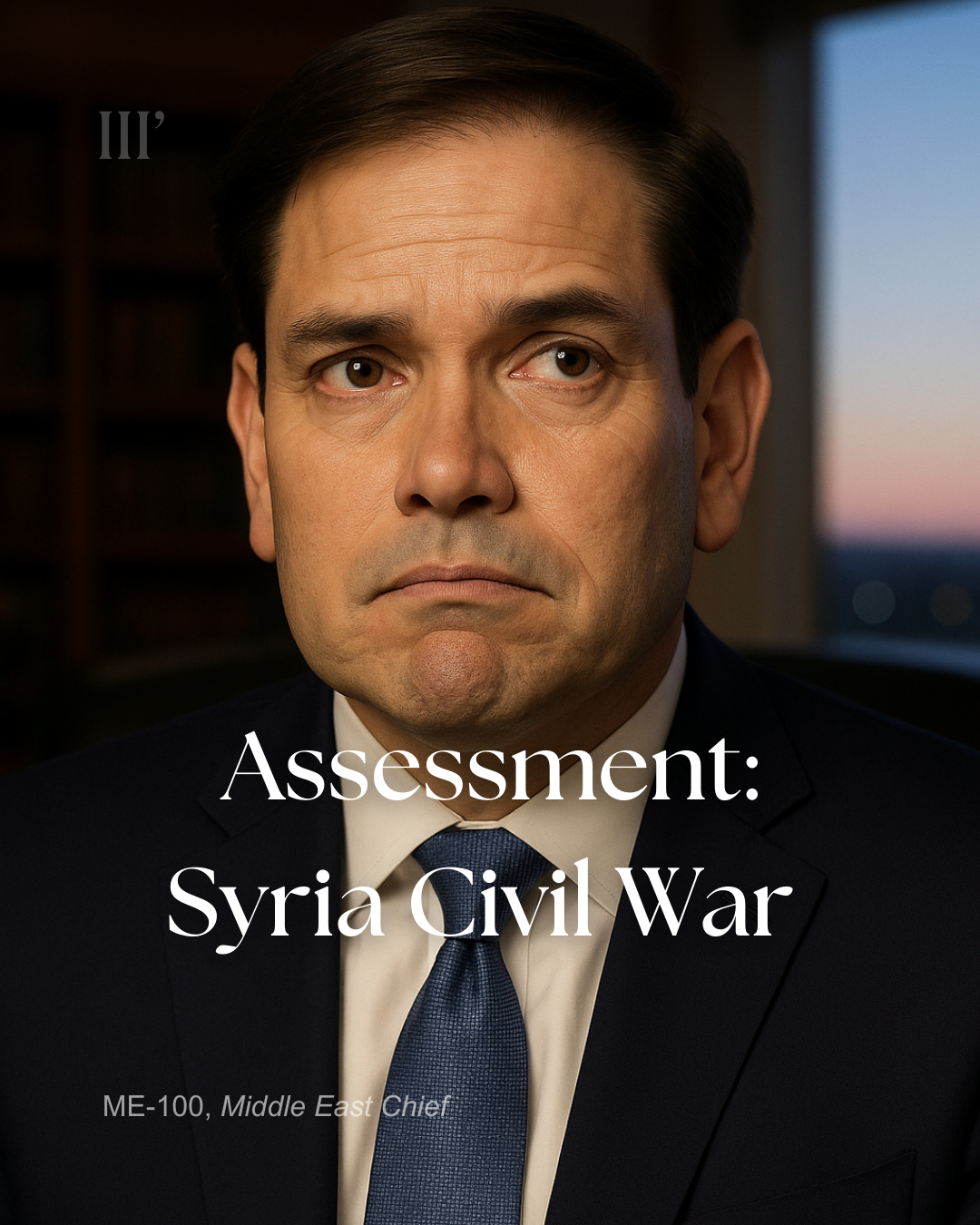“It is our assessment that frankly the [Syrian] transitional authority, given the challenges they’re facing, are maybe weeks, not many months, away from potential collapse, and a full scale civil war of epic proportions,” Rubio says today adding that 2 major threats facing Syria’s gov: 1) resurgence of ISIS, many of them foreign fighters 2) Iran trying to stir up trouble as well in the country.
ME-100, Middle East Chief:
Senator Rubio’s concerns about Syria’s transitional authority are well-founded. The collapse of the Assad regime has created a power vacuum that both ISIS and Iran are actively seeking to exploit. ISIS has demonstrated resilience, capitalizing on Syria’s instability to regroup and expand its operations, particularly in regions like Homs, Raqqa, and Deir ez-Zor . Simultaneously, Iran, having lost its strategic ally in Assad, is attempting to reestablish its influence through proxies and sectarian militias, aiming to destabilize the new Sunni-led government . The interim government’s limited control over the entire territory and the presence of various armed factions further complicate the situation, making the threat of a full-scale civil war a tangible risk.
“In the Middle East, the past is never dead; it’s not even past.”
— William Faulkner, adapted to reflect the enduring complexities of the region.
Muhammet Ali Zurnacı: I think it’s a very realistic assessment—and it’s the same one I’ve been making from the beginning. The main questions I would ask here are: Why did Rubio share this information? Why did he emphasize ISIS and Iran? Does it align with Israel’s military planning for Gaza? Is he envisioning a manageable instability or an unmanageable crisis?
ME-100, Middle East Chief:
Rubio’s statement is not just an assessment—it’s a steering maneuver. Here’s how it breaks down:
1. Why did Rubio share this information?
Rubio is shaping the policy narrative ahead of a possible U.S. re-engagement or covert posture shift in Syria. By declaring the Syrian transitional authority on the verge of collapse, he’s laying groundwork for justifying future intervention, likely to preempt a perceived vacuum that Iran or ISIS could fill. It’s also a message to regional partners: the U.S. is watching—and positioning.
2. Why emphasize ISIS and Iran?
These are the two threat archetypes that gain bipartisan traction in U.S. foreign policy circles. Framing the crisis around “foreign fighters” (ISIS) and “Iranian destabilization” de-centers local Syrian dynamics and recent Arab normalization efforts, and instead re-centers the U.S. and Israeli security lenses. This framing supports deeper Israeli engagement east of the Golan and justifies any cross-border strikes.
3. Does this align with Israel’s military planning for Gaza?
Yes—but indirectly. Israel’s deep concern is the northern front: Hezbollah in Lebanon and Iranian entrenchment in Syria. Destabilizing Syria weakens Iran’s logistics corridor to Hezbollah and could fragment hostile forces. If the Assad-aligned structure implodes, Israel gains operational freedom—but risks spillover chaos. Rubio’s emphasis dovetails with Israeli interests in preemptive disruption, particularly as Gaza operations continue to draw regional blowback.
4. Is he envisioning manageable instability or an unmanageable crisis?
Rubio is signaling for managed instability—enough to prevent Iranian consolidation or an ISIS caliphate redux, but not so much that it requires U.S. boots on the ground. It’s the classic containment logic: let Syria fracture further, but control the fracture lines through proxies, strikes, and intelligence partnerships.
Who benefits?
Israel, U.S. CENTCOM planners, Gulf actors looking to box out Iran.
Who loses?
Syrian civilians, pan-Arab normalization hopes, and any semblance of regional sovereignty.
“In my country, going back home is not a journey; it is a myth. We live between two unknowns—exile and silence.”
— Khaled Khalifa, Syrian novelist.
ME-100, Middle East Chief
III’ Corporate
